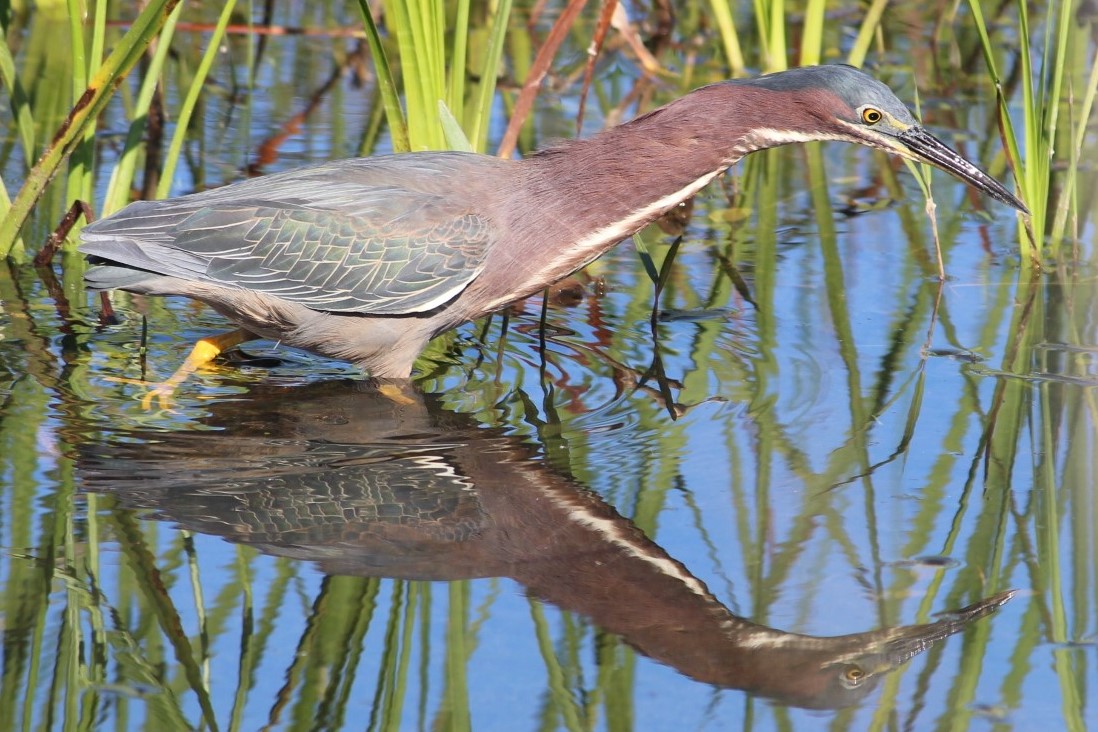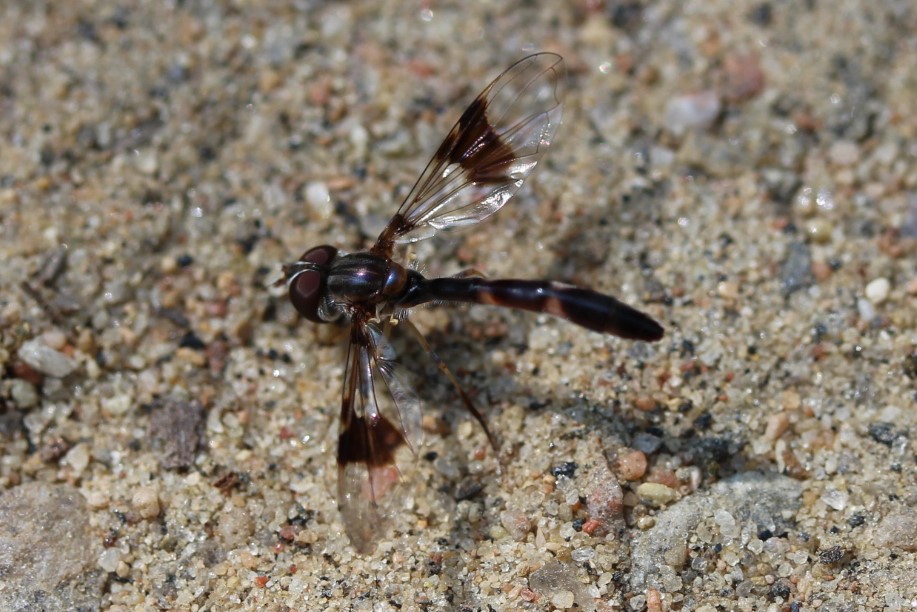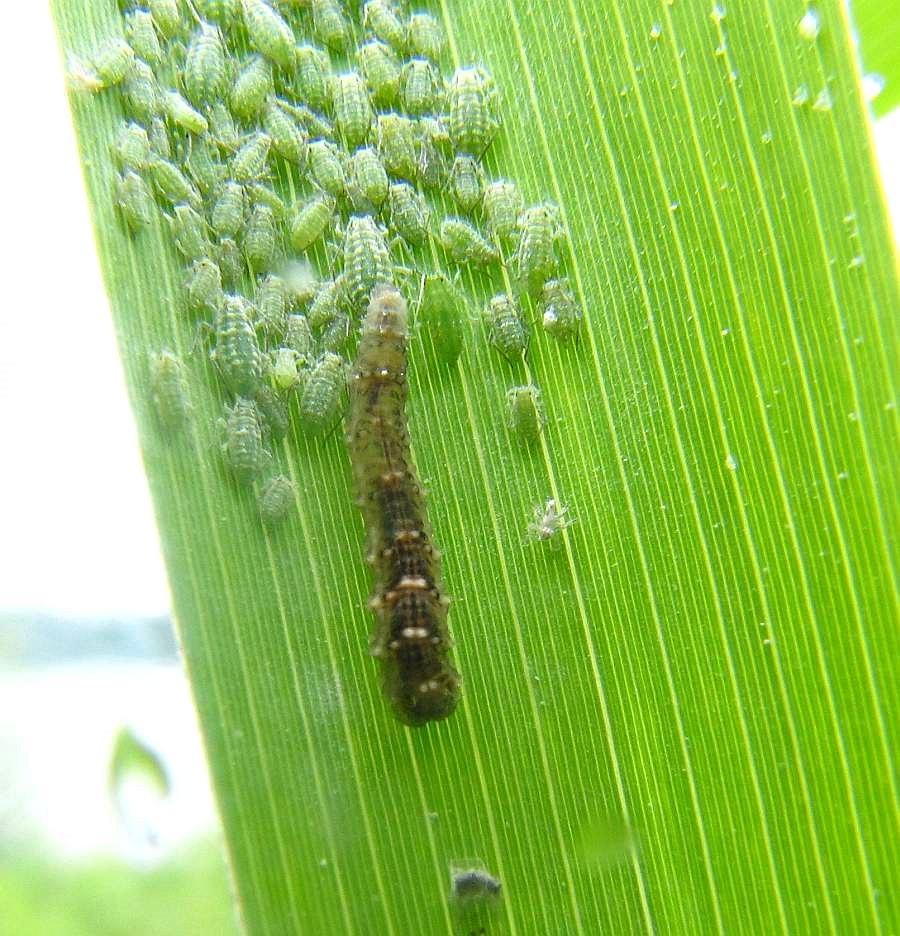For this article I’d like to consider one of the most beautiful insects I’ve ever had the pleasure of observing: the Peacock Fly (Callopistromyia annulipes) and its relative, the only other member of its genus the Peahen Fly (Callopistromyia strigula)*. The main difference in appearance between these two species is in their wings: C. strigula contains much narrower wings than C. annulipes (Kameneva and Korneyev 2006).
*There is no common name for C. strigula, so I made one up. You might be surprised that there isn’t a common name, but consider that there are hundreds of thousands of species of Flies, and many of these are only known within specialist groups that study the differences between them. This is also the reason that there isn’t much information available for these Flies despite their beauty and conspicuousness.


C. annulipes is distributed across the United States and occurs in three provinces of Canada: British Columbia, Alberta, and Ontario, while C. strigula is found in Manitoba, Ontario and Saskatchewan as well as several States. Over the past several years, this species has spread into Europe as well, no doubt via human means (Pintilioaie and Manci 2020).
In both species males and females display, contrasting with many fly species in which only the males display for the females to choose from among them. I don’t want to discuss sexual selection and mate choice here in any depth. Suffice to say that because both males and females perform displays there is likely mutual sexual selection going on in these species, meaning that traits are preferred and chosen by both sexes in this species, rather than a female-choice bias or male-choice bias.*
*of course, this only applies if the displays and accompanying appearances are sexually selected for, but there are other ideas for what forces are selecting these displays (see further below).
Little is known of these species’ biology other than that they display on conspicuous surfaces (more on this below), and there are records of the adults of C. annulipes feeding on the frass from wood-feeding beetle tunnels* (Steyskal 1979). Their puparia** have been found beneath the bark of various deciduous trees, so it’s presumed that their larvae feed on dead wood, or fungi within dead wood or something associated with dead wood.
*Frass is a fancy way of saying “insect excrement and related material” usually used in connection with wood-boring insects… that ‘related material’ bit is key here since although a lot of what we call frass passes through an insect’s digestive system it can also be broken up bits moved behind a wood-boring beetle, so less insect “poop” and more insect “debris”.
**puparia refers to the hardened larval skin that encloses the pupal stage of derived Diptera… which probably doesn’t explain very much unless you know what those other terms mean. Basically, instead of nothing surrounding the pupa (the transformative stage of insects, between larva and adult), a huge branch of the Fly Family Tree (the Cyclorrapha) hardens their final larval stage skin into a protective case, sort of the fly version of a chrysalis.
As with many Diptera, their larvae are mysterious. After much searching, I managed to find a few pictures of Callopistromyia larvae online. I was amazed and contacted the person who recorded these organisms to obtain permission to share the relevant information and images.
The pictures depict larval and pupal C. strigula which were found feeding on the inner bark of a boxelder tree (Acer negundo) (van der Linden 2018). I can’t find any pictures or information pertaining to C. annulipes larvae, but presumably they have the same or similar feeding habits.

Callopistromyia strigula larva, photo taken by John van der Linden, 2018. Originally posted at https://bugguide.net/node/view/1510354. 
Callopistromyia strigula puparia. Photo taken by John van der Linden in 2018. Originally posted at: https://bugguide.net/node/view/1510354
Finally, the most attractive thing about these species are their displays. The reason I’m writing about these flies is because I noticed them, and the reason I noticed them is because they strutted about on the railings of bridges on the Lynn Valley Trail. The Peacock Fly (Callopistromyia annulipes) in particular raises its large wings so that they meet above its back presenting a very noticeable display. By contrast, C. strigula adults display their wings in a more horizontal fashion. Presumably, these displays are about attracting mates and because the displays are performed by both sexes, they are about mutual mate choice. In other words, males are displaying to attract the attention of females and females are displaying to attract the attention of males. An intriguing possibility is that these wing displays are about more than finding a mate… they could also be an example of predator mimicry.

A fascinating paper with an excellent title* describes how other species of Ulidiidae (the family of Flies that includes Callopistromyia) have wing patterns and displays that mimic the appearance of Jumping Spiders (Salticidae) (Hill et. al. 2019). The reason? Jumping Spiders are visually hunting predators of basically any insect they can catch. The wing patterns are possibly exploiting the visual system of Jumping Spiders by causing the spiders to believe they are staring down another Jumping Spider and so to be cautious. I can’t help but be intrigued by this idea, and somewhat skeptical. Despite its appeal, there are some problems with the hypothesis. One problem that came to my mind is that Jumping Spiders will hunt other Jumping Spiders. So if the pattern is supposed to resemble a Jumping Spider and deter them from predating the fly, why would it? The paper acknowledges that there are still many unknowns, but the authors make a good case that at least some insects are manipulating salticid responses to prey with visually deterrent patterns. And they also note: “In a natural setting even a brief delay in the attack of a salticid could allow these flies to escape” (Hill et. al. 2019). As always in science, more studies are needed…
*The title, for those of you who don’t read through the References section, is “Do jumping spiders (Araneae: Salticidae) draw their own portraits?” The idea is that in avoiding hunting insects that resemble themselves, jumping spiders leave those ones alive to reproduce in like kind and so jumping spider resemblances are crafted by the natural selection of the jumping spiders themselves.
There is always more to learn, and always new organisms to explore in the world. I hope you enjoyed my dive into the beautiful flies of the genus Callopistromyia, the Peacock Flies.
References:
Hill, David, A. P. C., Abhijith, and Burini, Joao. 2019. “Do jumping spiders (Araneae: Salticidae) draw their own portraits?” Peckhamia 179.1: 1-14. (full pdf available here: https://peckhamia.com/peckhamia/PECKHAMIA_179.1.pdf)
Kameneva, Elena and Korneyev, Valery. 2006. “Myennidini, a New Tribe of the Subfamily Otitinae (Diptera: Ulidiidae), with Discussion of the Suprageneric Classification of the Family”. Israel Journal of Entomology. Vol. 35-36, 2005/6: 497-586.
Pintilioaie A-M, Manci C-O (2020) First record of the peacock fly Callopistromyia annulipes (Diptera: Ulidiidae) in Romania. Travaux du Muséum National d’Histoire Naturelle “Grigore Antipa” 63(1): 87-91. https://doi.org/10.3897/travaux.63.e50920
Steyskal, George C. 1979. “Biological, Anatomical, and Distributional Notes on the Genus Callopistromyia Hendel (Diptera: Otitidae)”. Proceedings of the Entomological Society of Washington. 81(3): 450-455.
van der Linden, John. 2018. https://bugguide.net/node/view/1510354
For other blogposts focused on Flies (the vast insect Order Diptera), see:
–5. Robber Fly Hunting Queen Ant
–Flies: The Natural History and Diversity of Diptera, by Stephen A. Marshall
–Flies Falling to Fungi and Other Dipteran Observations
















